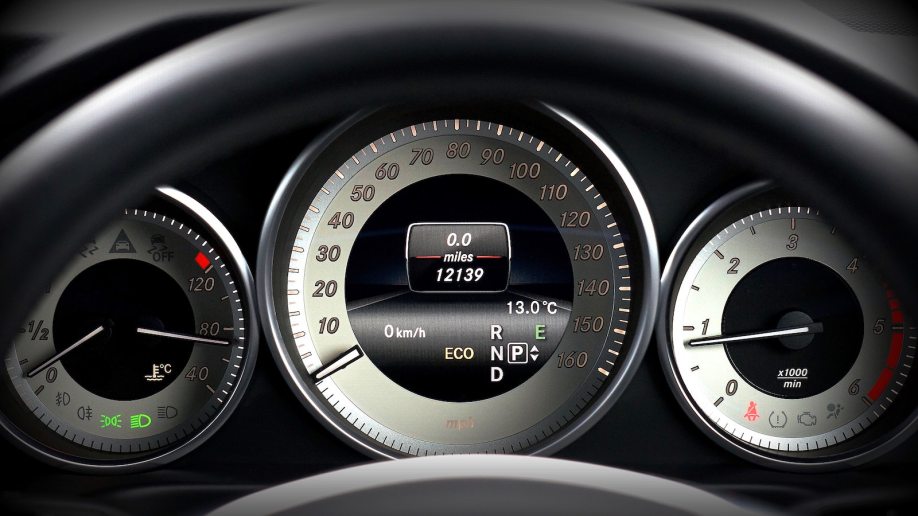Average Miles Driven Per Year: Why It Is Important(USA)
By Chris Hardesty 05/15/2023 12:01pm

Quick Facts About Average Mileage Per Year
- The average miles driven per year is 13,489 in 2021, up 765 miles from the figure for 2020, but it’s still less than pre-pandemic car mileage per year.
- The average driver in the U.S. drives 37 miles per day, according to Department of Transportation statistics.
- Annual mileage averages by state indicate more densely populated areas typically have lower miles per year averages.
Average annual miles indicate the number of miles drivers typically travel during the year. You can casually use this number to determine whether a vehicle gets used less than or more than usual.
But car insurance companies use average annual miles data points as one factor that influences your rate. Why? Because the more you drive, the more likely you’ll be involved in an accident.
Understanding your average mileage per year and other driving habits can help you keep your insurance rates in check.
What Are Average Miles Driven Per Year?
Drivers traveled an average of 13,489 miles in 2021, according to the United States Department of Transportation Federal Highway Administration’s most recent data. That’s up 6% from the 12,724 average miles driven in 2020, but it’s still less than the average miles driven per year before the pandemic lockdowns. For comparison, DOT figures show the average annual miles was 14,263 in 2019.
Drivers in 2021 drove an average of 1,124 miles every month, or 37 miles daily. The 2020 average equates to 1,060 miles per month per driver, or about 35 miles per day.
People rely on their cars because public transportation systems vary by location. Without vast public transportation systems to rely on for many Americans, cars allow many drivers to get to work, school, or recreation.
Altogether, motor vehicles traveled 3.14 trillion miles in the U.S. on rural and urban roadways in 2021, according to the most recent FHWA data. The figure is a 240-million-mile increase — more than 8% — over the previous year’s total as American drivers returned to the road after the 2020 lockdowns.
Factors That Determine How Many Miles You Drive
Driving an average of 37 miles per day seems like a lot to many people, while others might not think twice about driving that distance. No matter, daily commuting is the primary contributor to your average miles driven per year. In addition to your commute to work, the miles add up from out-of-town road trips, occasional driving to meet friends, weekly shopping, and other errands.
Where you live plays a part in your average mileage per year. For example, people living in rural areas might need to drive many miles to reach the nearest grocery store, school, post office, or pharmacy. Commercial establishments are likely closer to those living in more densely populated towns and cities, where walking, biking, or using public transportation are viable options.
Personal finances also contribute to how many miles people drive in their cars. Fuel costs can be prohibitively expensive for some car owners, who may limit driving to only necessary trips.
How Does Average Annual Mileage Affect Insurance Rates?
Your annual mileage directly affects how much you pay for car insurance. Motorists who spend more time on the road have a greater risk of filing an insurance claim than infrequent drivers who are less likely to have an accident.
Insurance companies use your average miles per year — along with other criteria such as age and experience — to predict your risk and set your premium accordingly. Typically, insurers ask about the average miles driven per year when drivers apply for a policy. It’s best to make an honest mileage estimate for how much you drive.
While there might not be a legal consequence for underestimating your average annual miles driven on the application, it could become problematic if you get into an accident. The insurer will learn the vehicle’s mileage if a claim gets made. Some companies request odometer reading updates. Other carriers may perform random mileage checks to avoid “soft fraud” when figures reach below-average miles.
Be sure to let your insurer know if your driving circumstances change. Having a shorter commute might produce a lower premium. For commuting, business, or pleasure, the type of driving you do affect how much you pay for car insurance coverage.
What Are Commuting Miles?
Commuting to work is the primary reason most people drive an automobile. “Commuting miles” is the term used for the number of miles it takes for a policyholder to get to work and back. Insurance companies use the figure to help determine whether an applicant’s annual mileage estimate is realistic.
Insurance carriers often allow up to 20 miles each way for commuting before increasing rates. Daily commuters who travel more than that might see higher rates because of additional time spent on the road, which often occurs in densely populated areas with higher instances of accidents.
RELATED: Hypermiling: How to Save Money on Gas
Do Different Demographics Play a Role in Annual Mileage?
Actuaries at insurance companies crunch numbers to predict the risk among policyholders and set policy premiums accordingly. One thing they consider is the average driven miles per year.
The most recent figures available from the DOT show significant differences in driving behavior exist according to gender and age group.
- Overall, men drive 6,000 more miles per year than women.
- Men ages 34-54 drive the most — almost 19,000 annual miles.
- Women over age 65 drive the least — less than 5,000 miles per year.
- Working-age men drive about 7,500 more miles than working-age women each year.
- Drivers ages 16 to 19 and adults over 65 each drive an average of 7,600 miles annually.
- Motorists drive more each year until retirement when annual mileage drops by 30%.
What Do Insurance Companies Consider Low Mileage?
Infrequent drivers may find savings if they drive less than the average annual mileage. Insurers typically give the highest discounts to drivers who log less than 7,000 miles annually on their vehicles.
Low-mileage car insurance works by tracking miles electronically, either with a telematics device installed in the vehicle or through a mobile app installed on your smartphone. Premiums for this type of insurance involve a flat monthly rate and a small fee per mile.
Some motorists might have privacy concerns about the tracking, while others find the cost savings outweigh any perceived intrusion. Don’t worry, though; they don’t care about where you are driving to, just how many miles it takes you to get there.
Select insurers offer standalone low-mileage policies, or you can enroll in mileage-based discount programs through a standard insurance carrier.
Low-Mileage Discounts and Other Savings
What qualifies as low mileage varies with insurance companies. Check with your carrier for potential mileage-based auto insurance discounts. Reductions can vary by state, but driving fewer than average annual miles may bring about 3% in policy savings.
Other insurance based on vehicle usage can create savings of up to 15% by using telematic devices, similar to those used for pay-as-you-go low-mileage policies.
The COVID-19 pandemic boosted consumer interest in usage-based insurance policies using telematics. The increase in people working from home or unemployed and the cancellation of public events led to many cars parked in garages and driveways instead of being driven on roads. Many owners looked at monitoring as a way to save money on vehicles not being used.
Interest has continued, to some degree. Insurance companies often promote usage-based insurance and telematics to monitor teen drivers and offer tips on vehicle maintenance and safe driving.
Each State’s Average Annual Mileage
More than 232 million drivers in the 50 states and the District of Columbia contribute to the average miles driven in 2021, the most recent Department of Transportation data available. Overall, average annual mileage increased from the previous year because pandemic-related travel restrictions eased, businesses reopened, and workers returned to commuting. Drivers in only four states — Connecticut, Michigan, New Hampshire, and West Virginia — traveled fewer miles in 2021 than in 2020.
Here are the average miles driven per year by state for 2021:
| STATE | Miles Per Driver |
| Alabama | 19,589 |
| Alaska | 11,077 |
| Arizona | 12,728 |
| Arkansas | 16,657 |
| California | 11,464 |
| Colorado | 12,204 |
| Connecticut | 11,122 |
| Delaware | 11,965 |
| District of Columbia | 6,356 |
| Florida | 13,476 |
| Georgia | 15,747 |
| Hawaii | 10,869 |
| Idaho | 14,372 |
| Illinois | 11,659 |
| Indiana | 16,963 |
| Iowa | 14,087 |
| Kansas | 15,166 |
| Kentucky | 16,143 |
| Louisiana | 15,920 |
| Maine | 13,781 |
| Maryland | 12,749 |
| Massachusetts | 12,064 |
| Michigan | 12,120 |
| Minnesota | 13,799 |
| Mississippi | 20,097 |
| Missouri | 18,664 |
| Montana | 15,737 |
| Nebraska | 14,741 |
| Nevada | 12,590 |
| New Hampshire | 11,176 |
| New Jersey | 11,401 |
| New Mexico | 18,158 |
| New York | 8,996 |
| North Carolina | 15,162 |
| North Dakota | 16,837 |
| Ohio | 13,632 |
| Oklahoma | 17,232 |
| Oregon | 12,159 |
| Pennsylvania | 11,286 |
| Rhode Island | 9,975 |
| South Carolina | 14,406 |
| South Dakota | 14,891 |
| Tennessee | 16,487 |
| Texas | 15,577 |
| Utah | 15,420 |
| Vermont | 14,107 |
| Virginia | 13,548 |
| Washington | 9,849 |
| West Virginia | 14,126 |
| Wisconsin | 14,970 |
| Wyoming | 25,778 |
What State Do Residents Drive the Most Miles Per Year?

Residents of Wyoming log the most annual miles, on average. The state’s population is spread across the plains in farming and ranching towns, and its drivers travel almost twice as many miles as the national average. Other states with high miles per year averages are more rural than urban.
Here are the states whose residents drive the highest average annual miles, according to the most recent 2021 data:
- Wyoming — 25,778 average annual miles
- Mississippi — 20,097
- Alabama — 19,589
- Missouri — 18,664
- New Mexico — 18,158
What State Do Residents Drive the Least Miles Per Year?
On the other end of the average annual mileage range is the District of Columbia. Its residents drove fewer than 6,400 miles in 2021, the least in the United States. Here are the states with the lowest average miles driven per year:
- District of Columbia — 6,356 average annual miles
- New York — 8,996
- Washington — 9,849
- Rhode Island — 9,975
- Hawaii — 10,869
MORE: Types of Gasoline Explained: Learn the Differences
Does Increased Average Annual Mileage Impact Car Prices?
The national average annual mileage in 2011 was almost 3,000 miles less than the most recent average in 2021. This increase in miles driven per year impacts the way Americans choose to buy cars, too, with many choosing more fuel-efficient hybrids and electric vehicles.
In addition, when you sell a car, high or low mileage will impact the sales price, along with vehicle depreciation and a host of other factors.
Drivers who lease their vehicles must recognize their average miles driven per year. Leases commonly have annual mileage allowances of 10,000 miles or 12,000 miles. However, high-mileage leases are available. This type of lease agreement costs more, allowing Americans to drive additional miles without exceeding their lease terms.
